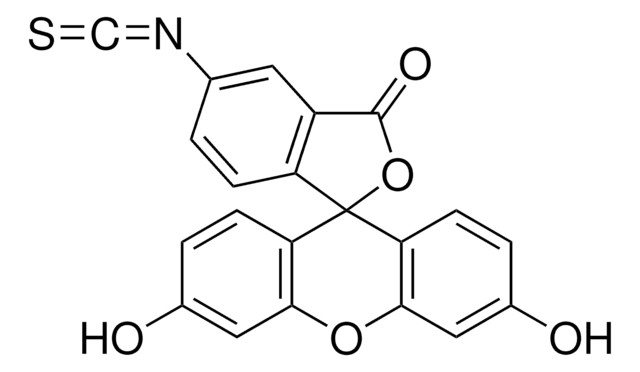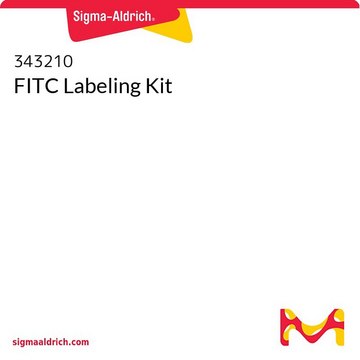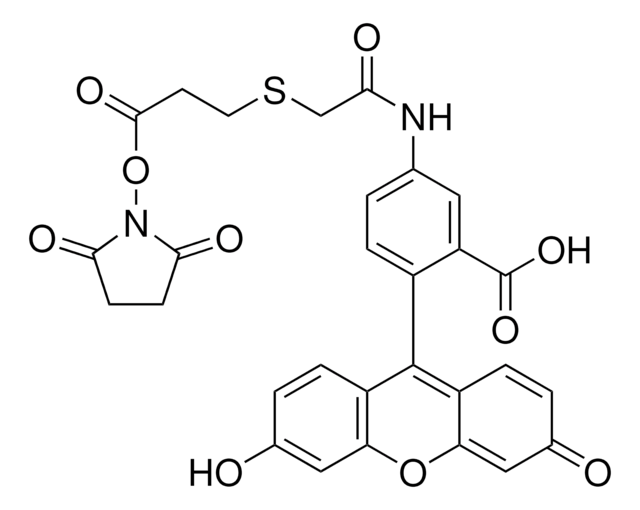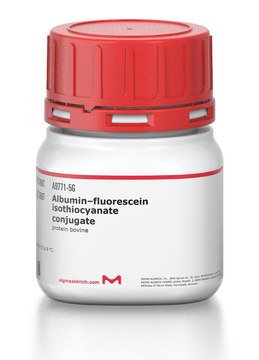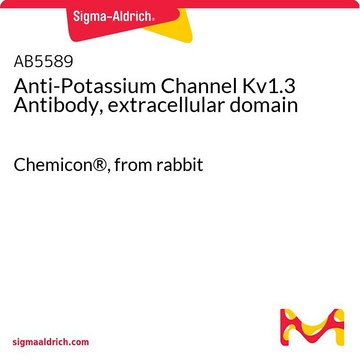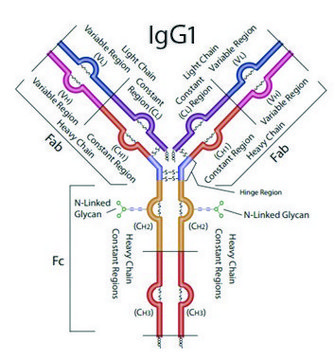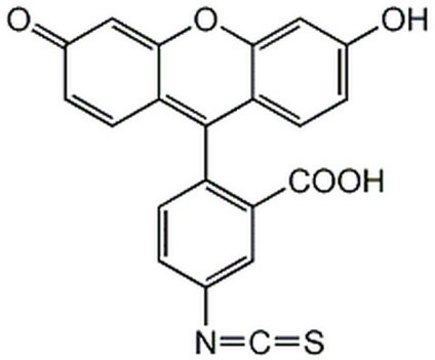FITC1
FluoroTag™ FITC Conjugation Kit
Synonym(s):
FITC
Select a Size
Select a Size
About This Item
Recommended Products
packaging
pkg of (Kit contains reagents for 5 conjugations.)
fluorescence
λex 495 nm; λem 525 nm
storage temp.
2-8°C
1 of 4
This Item | 776688 | 716812 | 716898 |
|---|---|---|---|
| contains CTAB as stabilizer | contains CTAB as stabilizer | contains CTAB as stabilizer | contains - |
| concentration >30 μg/mL in H2O | concentration >30 μg/mL in H2O | concentration >30 μg/mL in H2O | concentration ≥1800.0 μg/mL |
| diam. × L 10 nm × 59 nm (±10%) | diam. × L 10 nm × 67 nm (±10%) | diam. × L 10 nm × 38 nm , ±10% | diam. × L 10 nm × 41 nm ± 10% |
| diameter 10 nm | diameter 10 nm | diameter 10 nm | diameter 10 nm |
| density 1.00 g/mL at 25 °C | density 1.00 g/mL at 25 °C | density 1.00 g/mL at 25 °C | density 1 g/mL at 25 °C |
Application
Features and Benefits
- Suitable for both small (1 mg) and large (5 mg) scale conjugations
- Completely aqueous procedure - no DMF needed
- Fast gel filtration separation of conjugate from excess FITC
- Complete protocols for conjugation and F/P ratio determination
- Sufficient reagents for at least 5 conjugations of 5 mg protein each and for optimization of F/P ratio before scale-up
- References for applications and protocols
Principle
Analysis Note
1. Dissolve protein and FITC in carbonate-bicarbonate buffer.
2. Slowly add FITC to protein with stirring. Cover with foil and stir 2 hours at room temperature.
3. Separate conjugate from free FITC on G-25 column. Collect fractions.
4. Pool fractions containing conjugate.
5. Determine F/P ratio of conjugate spectrophotometrically.
6. Stabilize with 1% bovine serum albumin and 0.1% sodium azide and store at 0-5 °C.
Legal Information
Kit Components Only
- Sephadex G-25 column, 3.5 mL 1
- Sephadex G-25 column, 9.1 mL 1
- Fluorescein isothiocyanate isomer I - F7250KC-2MG 2 mg
Kit Components Also Available Separately
- P3813Phosphate buffered saline, powder, pH 7.4, for preparing 1 L solutions 5 pkg
related product
Signal Word
Warning
Hazard Statements
Precautionary Statements
Hazard Classifications
Eye Irrit. 2
Storage Class Code
10 - Combustible liquids
Flash Point(F)
Not applicable
Flash Point(C)
Not applicable
Choose from one of the most recent versions:
Certificates of Analysis (COA)
Don't see the Right Version?
If you require a particular version, you can look up a specific certificate by the Lot or Batch number.
Already Own This Product?
Find documentation for the products that you have recently purchased in the Document Library.
Which document(s) contains shelf-life or expiration date information for a given product?
If available for a given product, the recommended re-test date or the expiration date can be found on the Certificate of Analysis.
How do I get lot-specific information or a Certificate of Analysis?
The lot specific COA document can be found by entering the lot number above under the "Documents" section.
Can Product FITC1, FluoroTag™ FITC Conjugation Kit, be used with antibodies at concentrations less than 5 mg/mL?
You can scale down the reaction for labeling. A possible problem occurs in using the column to remove the free FITC. If the volume is too small, the column cannot be used. We would recommend using dialysis to remove the free (unconjugated) FITC.
Can the columns in Product FITC1, FluoroTag™ FITC Conjugation Kit, be reused?
Wash the column with 35 ml (10 X column volumes) of PBS to remove unbound fluorophore. This is sufficient to regenerate the column. For prolonged storage, wash the column with 10 mL of PBS containing 0.05% sodium azide and store capped at 2-8 °C, with about 1 mL buffer above the gel.
When using Product FITC1, FluoroTag™ FITC Conjugation Kit, should I adjust the dye:protein ratio for the size of the protein being labeled?
Adjustments for dye/protein ratios should only be made for very small proteins, i.e. < 25 kDa. Here, you should use less protein per dye portion. In many cases, this weight amount of protein is IgG with MW 150 kDa, and the kit would provide a molar excess of dye to provide attachment of a few dyes per IgG. If one wants to attempt labeling of a very small protein using the same weight ratio, there is a good chance there would not be enough dye/protein.
My antibody is in solution containing azide. Can I use the antibody directly in the reaction when using Product FITC1, FluoroTag™ FITC Conjugation Kit?
It is not recommended to have azide in the reaction mix. If the buffer contains amines or sodium azide, dialyze protein solution (1 mL) against PBS, pH 7.4 (approximately 1000 mL), overnight at 2-8 °C.
How do I find price and availability?
There are several ways to find pricing and availability for our products. Once you log onto our website, you will find the price and availability displayed on the product detail page. You can contact any of our Customer Sales and Service offices to receive a quote. USA customers: 1-800-325-3010 or view local office numbers.
What is the Department of Transportation shipping information for this product?
Transportation information can be found in Section 14 of the product's (M)SDS.To access the shipping information for this material, use the link on the product detail page for the product.
My question is not addressed here, how can I contact Technical Service for assistance?
Ask a Scientist here.
Our team of scientists has experience in all areas of research including Life Science, Material Science, Chemical Synthesis, Chromatography, Analytical and many others.
Contact Technical Service